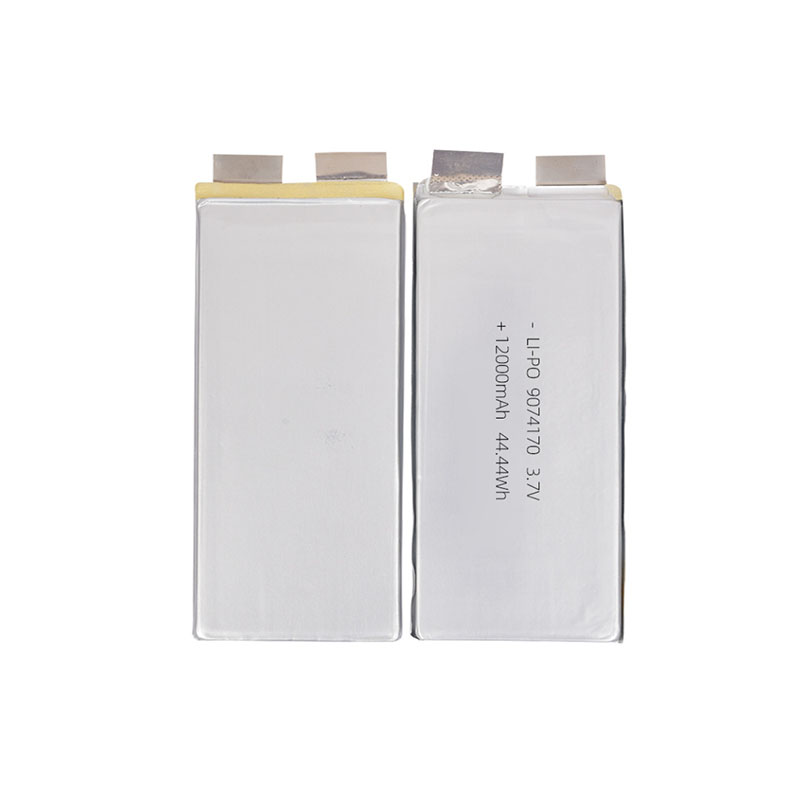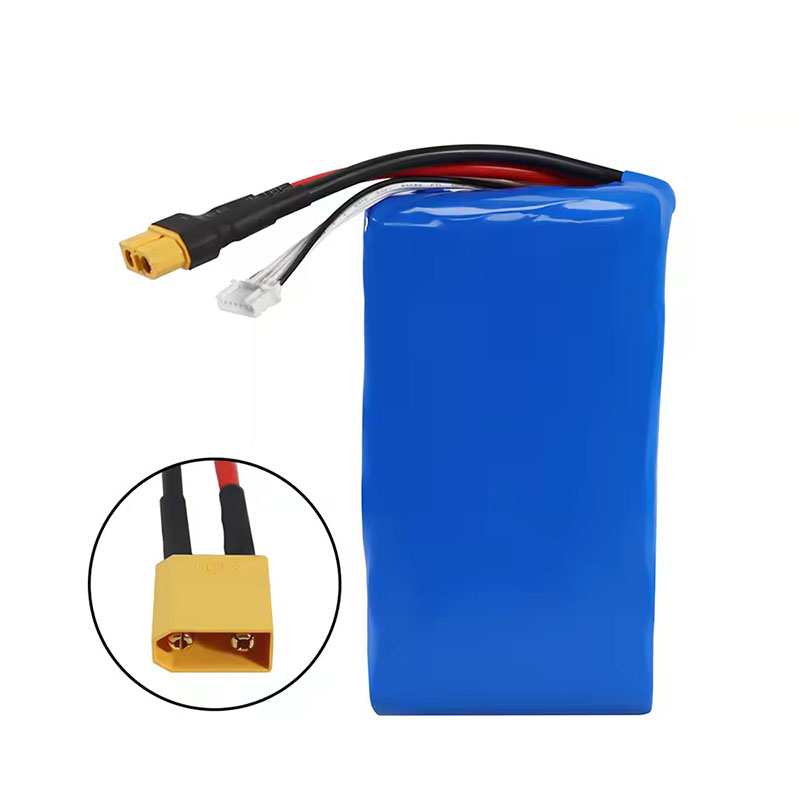Blog
Explore the Power of Lithium Innovation
Stay updated with the latest trends, technologies, and application insights in the world of lithium battery solutions
Search the whole station
Explore the Power of Lithium Innovation
Stay updated with the latest trends, technologies, and application insights in the world of lithium battery solutions
In today’s era of rapid technological advancement, the drone industry is extending into various fields at an astonishing pace.
From detailed inspections of photovoltaic power stations to automated pesticide spraying in vast farmlands; from innovative applications in parcel delivery to emergency support in disaster relief, and to precision tasks in surveying and mapping—drones are everywhere. Among these numerous applications, agricultural plant protection drones, with their high efficiency and precision, have become powerful tools in modern farming. However, at the heart of these drones lies the battery, whose performance and lifespan directly impact the efficiency and operational cost of the drone, making it a core concern for every user.

Currently, most plant protection drones use lithium batteries as their power source. The working principle of lithium batteries is based on the orderly “migration” of lithium ions between the positive and negative electrodes. During charging, lithium ions detach from the positive electrode material, travel through the electrolyte, and embed into the negative electrode material. During discharging, lithium ions move in the opposite direction—from the negative electrode back to the positive electrode—while generating current in the external circuit to power the drone.
Compared with other types of batteries, lithium batteries demonstrate several significant advantages.
First, their high energy density allows lithium batteries to store more electric energy within a limited volume and weight, enabling drones to be designed with reduced weight while offering extended endurance.
Second, their low self-discharge rate ensures stable battery power during idle periods, avoiding the hassle of frequent recharging.
Third, the absence of a memory effect is another highlight—users don’t need to worry about capacity degradation due to incomplete discharges, as the battery can be charged at any time, making it very convenient.
These features make lithium batteries the ideal power source for plant protection drones, providing a solid energy foundation for efficient operations.

The lifespan of a plant protection drone battery is not fixed but is influenced by multiple factors. Among them, the number of charging cycles is one of the most intuitive. Generally, the battery lifespan is closely related to the number of charge cycles. After about 1000 cycles, the battery’s performance noticeably declines, its endurance weakens, and replacement may become necessary.
In addition to charge cycles, usage scenarios and frequency also play a crucial role in battery life. Under high-intensity operations—such as frequent pesticide spraying over large fields—the drone battery must continuously discharge at high loads, which undoubtedly accelerates the depletion of internal chemical substances and shortens the battery’s lifespan. Conversely, with lower usage intensity, the aging process slows down accordingly.
Moreover, ambient temperature is another critical factor. Extremely high or low temperatures can negatively impact lithium battery performance. In high-temperature environments, chemical reactions inside the battery accelerate, potentially causing overheating, swelling, or even fires. In cold environments, lithium ion activity decreases, significantly reducing the charge-discharge efficiency and cutting down battery endurance.

To maximize the lifespan of plant protection drone batteries, users must adopt proper maintenance and inspection practices.
Firstly, during the charging process, overcharging and over-discharging should be avoided. When the battery level drops to around 20%–30%, it should be recharged in time to prevent damage from over-discharge. During charging, once the battery reaches 90%–95%, charging should be stopped to avoid irreversible damage from overcharging.
Secondly, proper battery storage is also critical. If the drone is not used for a long period, the battery should be stored at 40%–60% charge and placed in a cool, dry, and well-ventilated environment, away from direct sunlight and humidity.
Additionally, regular deep charge and discharge cycles—fully discharging and then fully charging the battery—can help activate internal chemical substances and restore battery performance.
Besides daily maintenance, regular battery inspection is equally essential. Users can utilize professional battery diagnostic equipment to check parameters such as voltage, internal resistance, and capacity to detect potential issues early. If any signs of battery swelling, abnormal heating, or a sudden drop in endurance are observed, the battery should be immediately taken out of service and inspected or replaced by professionals to prevent safety incidents.
As the plant protection drone industry continues to thrive, the battery—being the power core of the drone—plays a pivotal role not only in influencing agricultural productivity and cost but also in shaping the development of the entire industry.
By gaining a thorough understanding of battery types, working principles, and lifespan influencers, and by mastering proper maintenance and inspection methods, users can effectively extend battery life, enhance drone operational efficiency, and provide strong support for the intelligent and efficient development of modern agriculture.

Apsenx 3S LiPo battery delivers powerful, stable energy for FPV and RC drones. Designed for advanced pilots, it balances voltage, capacity, and weight for optimal flight performance and extended runtime.

Apsen 12000mAh high-rate low-temperature UAV lithium battery with smart BMS for industrial and consumer drones. Long endurance, high discharge rate, customizable voltage, and certified global safety compliance.

Apsen 8000mAh 21700 6S2P 22.2V 10C LiPo battery for RC aircraft, FPV drones, and industrial UAVs. High discharge rate, customizable connectors, OEM/ODM support, and certified safety compliance.

Apsenx 6S 22.2V 12000mAh LiPo battery for agricultural drones, FPV racing, and RC aircraft. Features XT90 connector, high discharge rate, long flight endurance, and full OEM customization.

Apsenx 22000mAh 8S1P 30.4V lithium battery for drones, RC aircraft, and industrial equipment. Delivers 668.8Wh with XT90 connector, stable voltage, and full OEM customization options.

Apsenx 22.2V 15000mAh 10C high-rate 21700 Li-ion battery for FPV drones, RC aircraft, and agricultural UAVs. Delivers up to 150A continuous discharge with XT60 connector, long cycle life, and stable performance.
Learn how to choose the best lithium iron phosphate (LiFePO4) battery for your trolling motor. Discover calculation methods for runtime, battery types, and advantages of lithium batteries for longer fishing trips.
View detailsExplore the working principle, performance advantages, and energy storage applications of LFP prismatic batteries. Learn how lithium iron phosphate square cells power homes, commercial systems, EVs, and energy storage stations.
View detailsDiscover the advantages, applications, and assembly insights of 10S3P lithium-ion battery packs. Apsenx delivers safe, efficient, and long-lasting customized solutions for electric transportation, energy storage, and professional equipment.
View detailsLearn how to store power tool batteries safely to extend lifespan, prevent hazards, and maintain performance. Tips for Li-ion, Ni-Cd, and Ni-MH batteries included
View details
HelloPlease log in